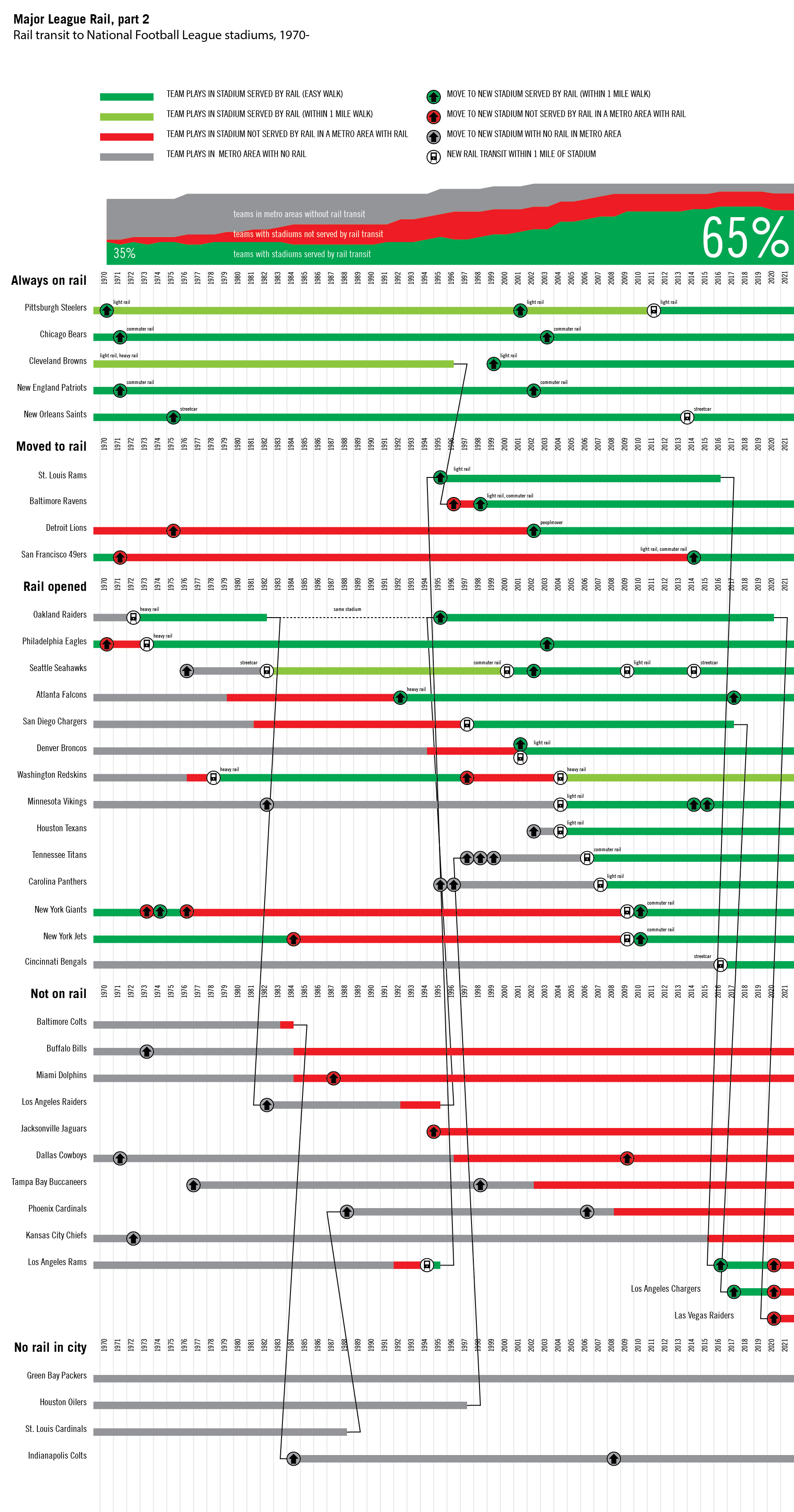Major League Rail (Part 2)
The 2019 Super Bowl is being played at Mercedes Benz Stadium in Atlanta, almost directly on top of a MARTA heavy rail station. As it turns out, that’s not unusual. This is the fourth year in a row that the NFL championship will be played in. a stadium that’s served by rail transit. 65% of NFL teams play within walking distance of a streetcar, light rail, heavy rail, or commuter rail station. That’s not as high as baseball, but still notable for a sport where parking lot tailgates are part of the culture and whose massive stadiums do not fit into downtowns as well as basketball arenas or baseball stadiums do.
The NFL is so well served by transit because cities have spent significant money to make that happen. Only 3 current NFL teams got a rail connection by moving to a stadium on an existing rail line. 12 had a new rail line open next to their stadium. Some of these rail lines just happened to be in the right place, but many were intentionally built to serve a stadium, often in suburban locations that would not otherwise merit service. The most extreme examples are in suburban New Jersey and Boston, where entire commuter rail lines operate only for game days, the tracks and stations sitting unused every other day of the year.
Even compared to other sports venues, the ridership from stadiums is sparse. An NFL team plays 8 home games in the regular season, with another 2 or 3 playoff games if they are lucky. Football stadiums hosts some concerts, too, but not nearly as many as arenas. On those few days, stadiums with up to 82,500 seats can bring a lot of transit riders, but average that over the year and employment centers, hospitals, universities, community colleges, high schools, or shopping centers can draw far more. And on those few days the crowds can overwhelm the transit system.
Politically, though, stadiums, — high profile, taxpayer funded facilities — loom large. So it’s likely cities will keep building trains to stadiums. NFL teams, on the other hand, may not care that much. The next three NFL teams moving to new stadiums — the Raiders, Chargers, and Super Bowl-bound Rams — are moving away from rail when they do. That seems to be in contrast to major league baseball and basketball teams, which seem to value urban locations with rail.

